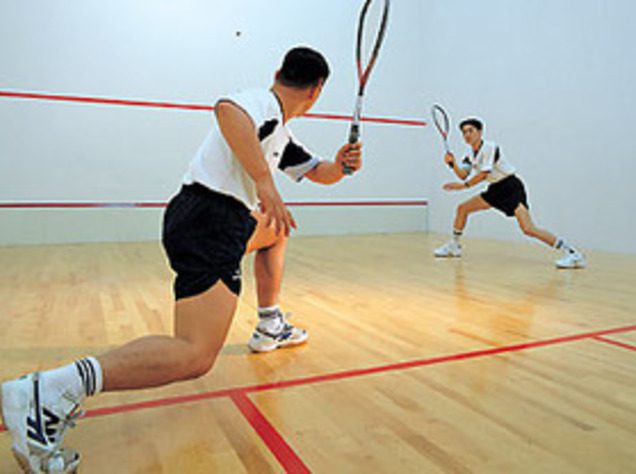The most vital aspect of squash strategy is the ability to control your opponent with movement. By having control of your own position in the middle of the court, you can be efficient with your movement and force your opponent to tire out much faster. With every rally, you as a squash player want to spend as much time as possible on the ‘T’.
Start your rally’s with the mid-court attacking shot. By doing this, you will be able to work your opponent and move them in all directions around the court. Sarah Kippax, an international squash player from England, believes that by making a strong attack volley from the center of the court you can efficiently control the ‘T’. When hitting making the volley, make sure you leave your back leg out so that you are as close to the ‘T’ as possible.
When executing your shots, it is important to focus on having the proper clearing. Before hitting the ball, you need to make sure that you are in a position where hitting a clean stroke is possible. A well-executed shot is made when a player does not allow the rally to get too tight where they simply reach out their racquet and hope the ball will make it back to the wall. However, when trying to make the clearing, a player can end up being very predictable for which shot they are going to hit next. If you have time to move into a proper, dangerous position, your opponent is going to watch and try to predict which shot you will hit next. Try to be unpredictable with your shots. To do this, mix it up between hitting cross court shots and deep balls down the line. This strategy is effective because you can keep your opponent constantly guessing.
In addition to mixing up the shots you hit, a great way to control the ‘T’ is by varying your pace of play. While squash is an extremely physical game, it also has a large mental component. Varying your pace of play is a strategical way to control the match. When it comes to deciding when to hit the ball fast or slow, it is important to pay attention to when you need to change the momentum of the game. If your opponent is smashing every ball that comes their way, try to slow down the pace by slowing down your racquet speed and hitting shots that drop into the back of the court. On the other hand, if your opponent is just popping the ball back your way, use this to your advantage by increasing your racquet speed and hitting balls that will not bounce as much.
One of the best squash exercises to work on getting back to the ‘T’ is called the Star Drill.
- Execution: Begin at the T. Using proper footwork, move as fast as you can from each point on the court back to the ‘T’. For instance, 1) the back left corner 2) top of the left service box 3) down the left line 4) up to the left front corner 5) up to the right front corner 6) down the right line 7) back to the top right service box and 8) back left corner. Move as fast as you can from each spot directly back to the T, and then move to the next number.
How useful was this post?
Click on a star to rate it!
Average rating 4.5 / 5. Vote count: 2
No votes so far! Be the first to rate this post.



